Page 9 of 156
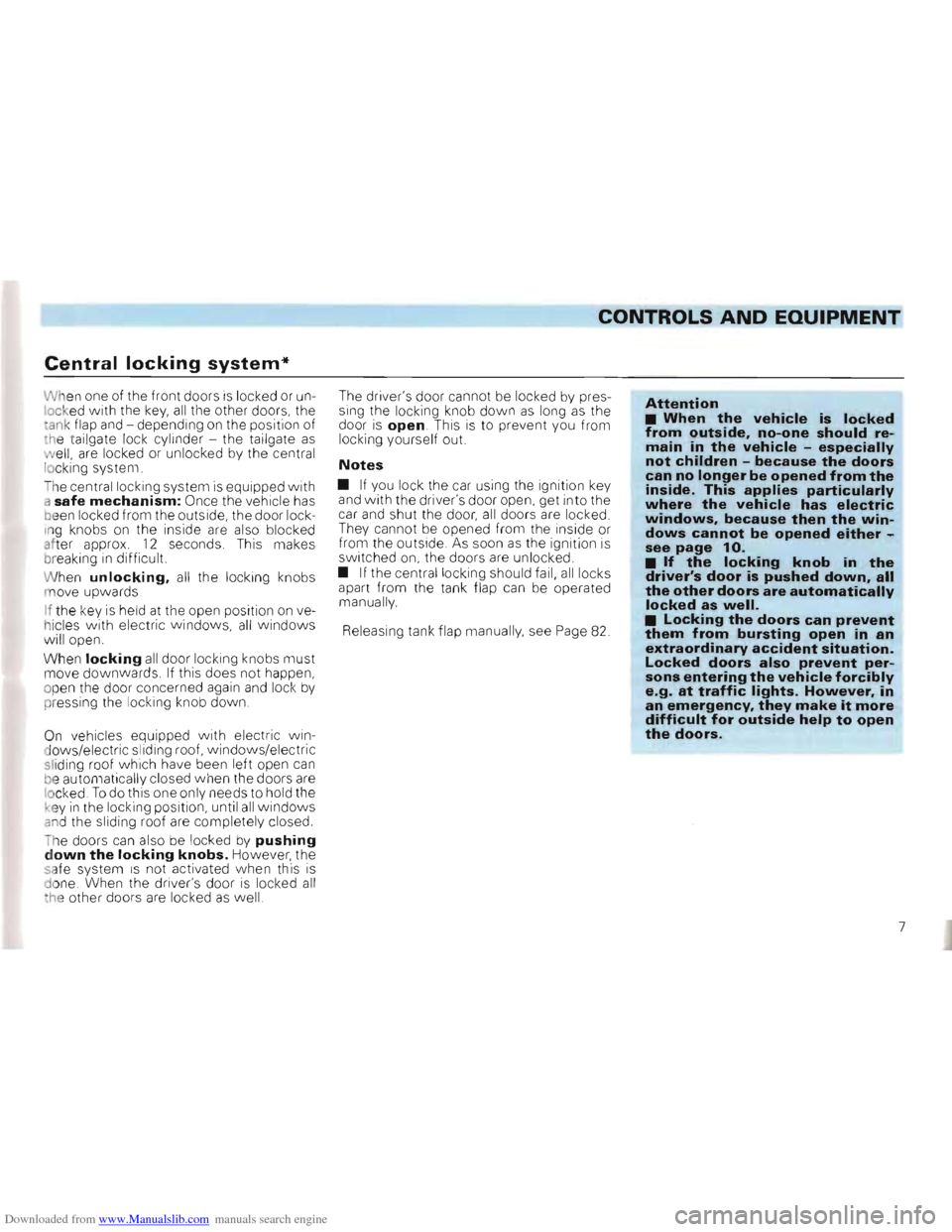
Downloaded from www.Manualslib.com manuals search engine Central locking system*
When one of the front doors is locked or un
lock ed w ith the key, all the other doors, the
tank flap and -depending on the position of
h e tailgate lock cylinder -the tailgate as w el l, are locked or unlocked by the central locking system
T he centra l locking system
is equipped with
a safe mechanism: Once the vehicle has been locked fr om the outside, the door lock Ing knobs on the inside are also blocked
a ft er approx. 12 seconds. This makes
b reaking in d ifficult.
W hen
unlocking, all the locking knobs
m ove upwards .
I f the key is held at the open position on
ve
h icles with electr ic win dows, all windows
wi ll open.
W hen
locking all door locking knobs must
m ove downwards. If this does not happen,
o p
en the door concer ned again and lock by pre ssing the locking knob down .
On ve hicles equipped w ith electric w inows/ele ctri c s liding roof, w indows/ele ctri c
s liding roof w hich hav e been left open can be automatically closed when the doors are
l o cked . T o do this one only need s to hold the
e y
in the lock ing position, until all windows and the sliding roof are completely closed.
The doors can also be locked by pushing down the locking knobs. However, the
s fe system IS not activated when th is is done. When the driver's door is locked all the other doors are locked as well. The
driv er
's door canno t be locked by pres
s ing the locking knob down as long as the
door is open. This is to prevent you from
locking yourself out.
Notes
• If you lock the car using the ignition key and with the driver' s door open, get into the
car and shut the door, all doors are locked.
They cannot be opened from the inside or
from the outs ide. As soon as the ignition is swit ched on, the door s are unlocked .
• If the ce ntral loc king shou ld fail , all locks
apart from the tank flap can be operated
manually.
Releasing tank flap manually, see Page 82.
Attention • When the vehicle is locked from outside, no-one should remain in the vehicle -especially not children -because the doors can no longer be opened from the inside. This applies particularly where the vehicle has electric windows, because then the windows cannot be opened either see page 10. • If the locking knob in the driver's door is pushed down, all the other doors are automatically locked as well. • Locking the doors can prevent them from bursting open in an extraordinary accident situation. Locked doors also prevent persons entering the vehicle forcibly e.g. at traffic lights. However, in an emergency, they make it more difficult for outside help to open the doors.
7
Page 10 of 156
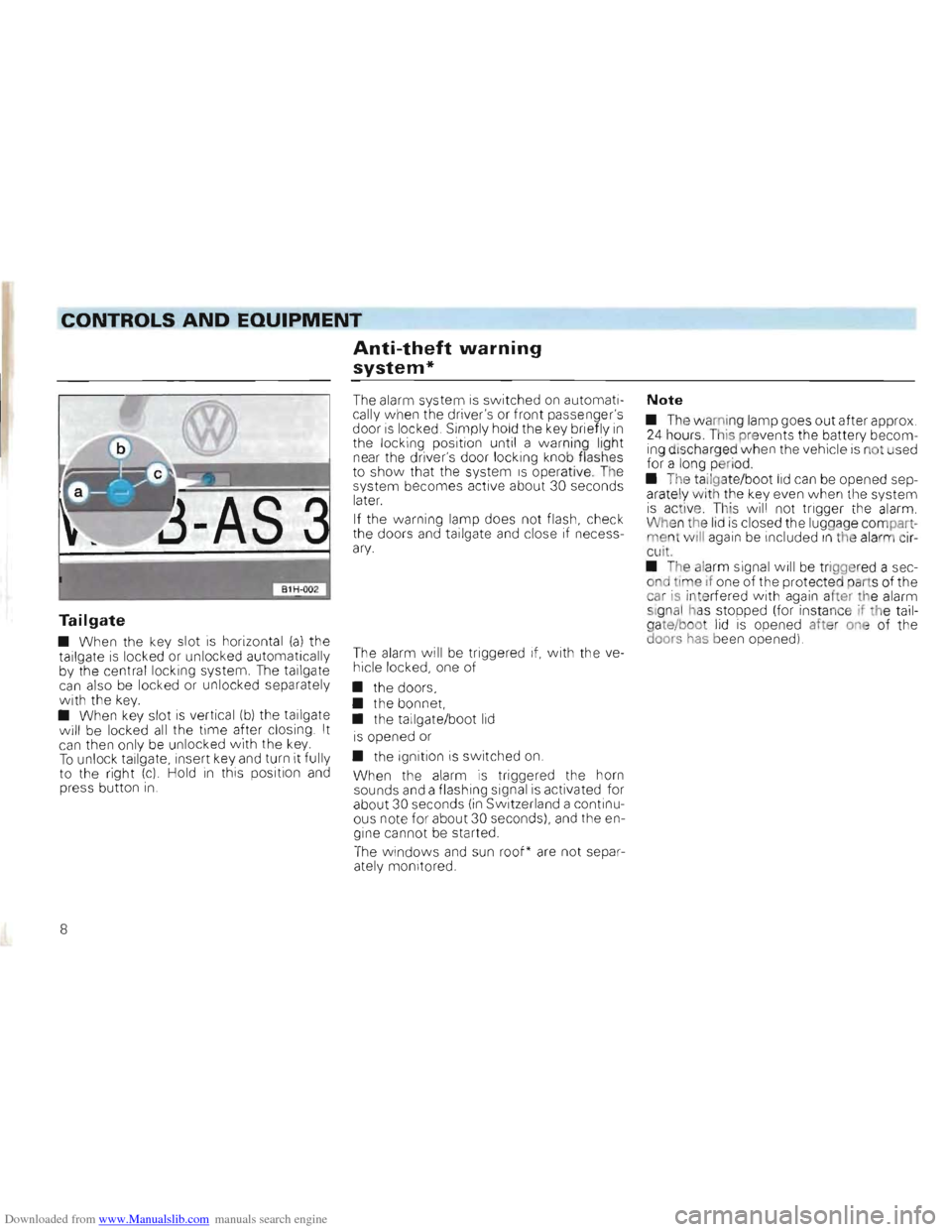
Downloaded from www.Manualslib.com manuals search engine CONTROLS AND EQUIPMENT
Anti-theft warning
system*
Tailgate
• When the key slot is horizont al (a) the
tailgate is locked or unloc ked automatically
by the central locking system. The tallgate can also be locked or unloc ked separately with the key. • When key slot is vertical (b) the tailgate
will be locke d all the time after closing . It can the n only be unlocked with the key. To unlock tailgate , insert key and turn It fully
to the right (c) Hold in this position and press button in .
The alarm system is switched on automatically when the driver's or front passenger's door is locked. Simply hold the key briefly in the locking position until a warni ng light
near the driver's door locking knob flashes
t o show that the system IS operative. The
system becomes active about 30 seconds
lat
er.
If the warning lamp does not flash, check
the doors and tailgate and close if necessary.
The alarm will be triggered if, with the ve
hicle locked, one of
• the doors,
• the bonnet,
• the tailgate/boot
lid
is opened or
• the ignition is switched
on.
When the alarm is triggered the horn
sounds and a flashi ng signal is activated for
about 30 seconds (in Switz erland a continu
ous note for about 30 seconds), and the en
gine cannot be started .
The windows and sun roof* are not separ
ately monitored .
Note
• The wa mi ng lamp goes out after approx . 24 hours. T hiS pre ven ts the battery becom
ing disc harged when the vehicle is not used for a long peri od
• The
tailgate/boo t lid can be opened sep
arate ly wi th the key even w hen the system is active . This wi ll not trigger the alarm .
Whe n the lid is closed the luggag e compartment wili again be included In the alarm circu it.
•
The alarm signal will be triggered a sec
ond time if one of the protecte d part s of the
car
is inte rfered w ith again aher th e alarm
si gnal has stopped (for insta nce if the tailgate/boo t lid is opened after one of the
doors has been opened)
8
Page 11 of 156
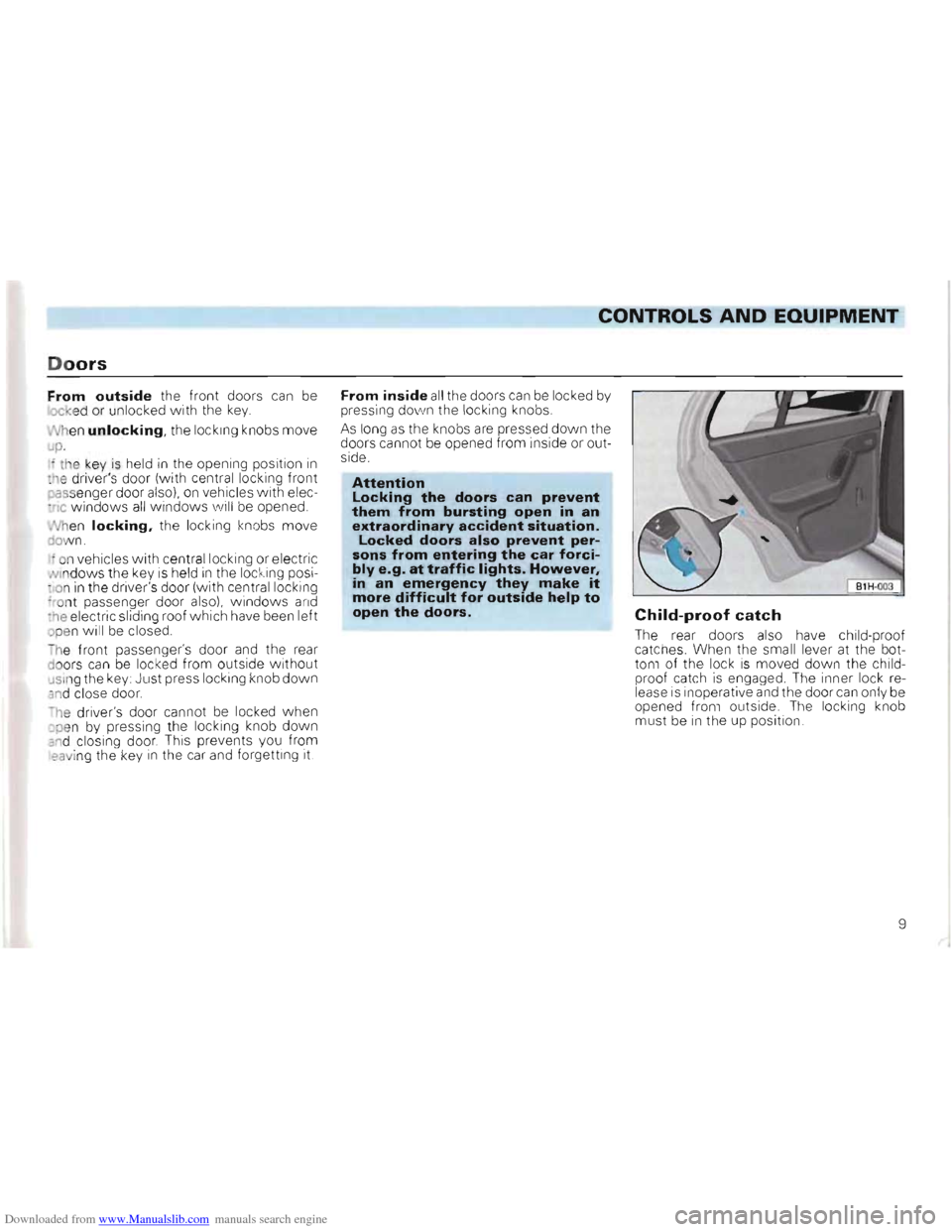
Downloaded from www.Manualslib.com manuals search engine CONTROLS AND EQUIPMENT
Doors
From outside the front doors can be
ocked or unl ocked with the key.
h
en unlocking, the locking knobs move .Jp.
I the key is held in the opening position in .119 d riv er's door (with central locking front passenge r door also), on vehicles with elec
-'le wi ndows all windows will b e opened .
:Jh
en locking, the locking kn o bs move dow n.
-o n vehicles with central locking or electric
Nln dows the key is held in th e loc king posi
- o n in the driver's door (with cen tral lock ing 'ront passe nger door also), windows an d
:ne electric sliding roof which have been left
o pe n w ill be closed.
The fron t passenger's door and the rear
d oors can be locked from outside without Jsing the key J ust press locking knob down and close door.
-he dri ver's door cannot be locked when :Jpe n by pre ssing the locking knob down and closing door . This pre vents you from
eaving the key in the car and forgetting it.
From inside all the door s can be locked by
press ing down the locking knobs.
As long as the knobs are pr esse d down the
doors cannot be opened from inside or outside.
Attention Locking the doors can prevent them from bursting open in an extraordinary accident situation. Locked doors also prevent persons from entering the car forcibly e .g. at traffic lights. However, in an emergency they make it more d ifficult for outside help to open the doors. Child-proof catch
The rear doors also have child-pr oof catc hes . When the small lever at the bot
to m of the lock is moved down the chi ld
proof cat c h i s engaged. The inner lock release is inoperative and the door can only be opened from outside. The locking knob
m ust be in the up po sition .
9
Page 12 of 156
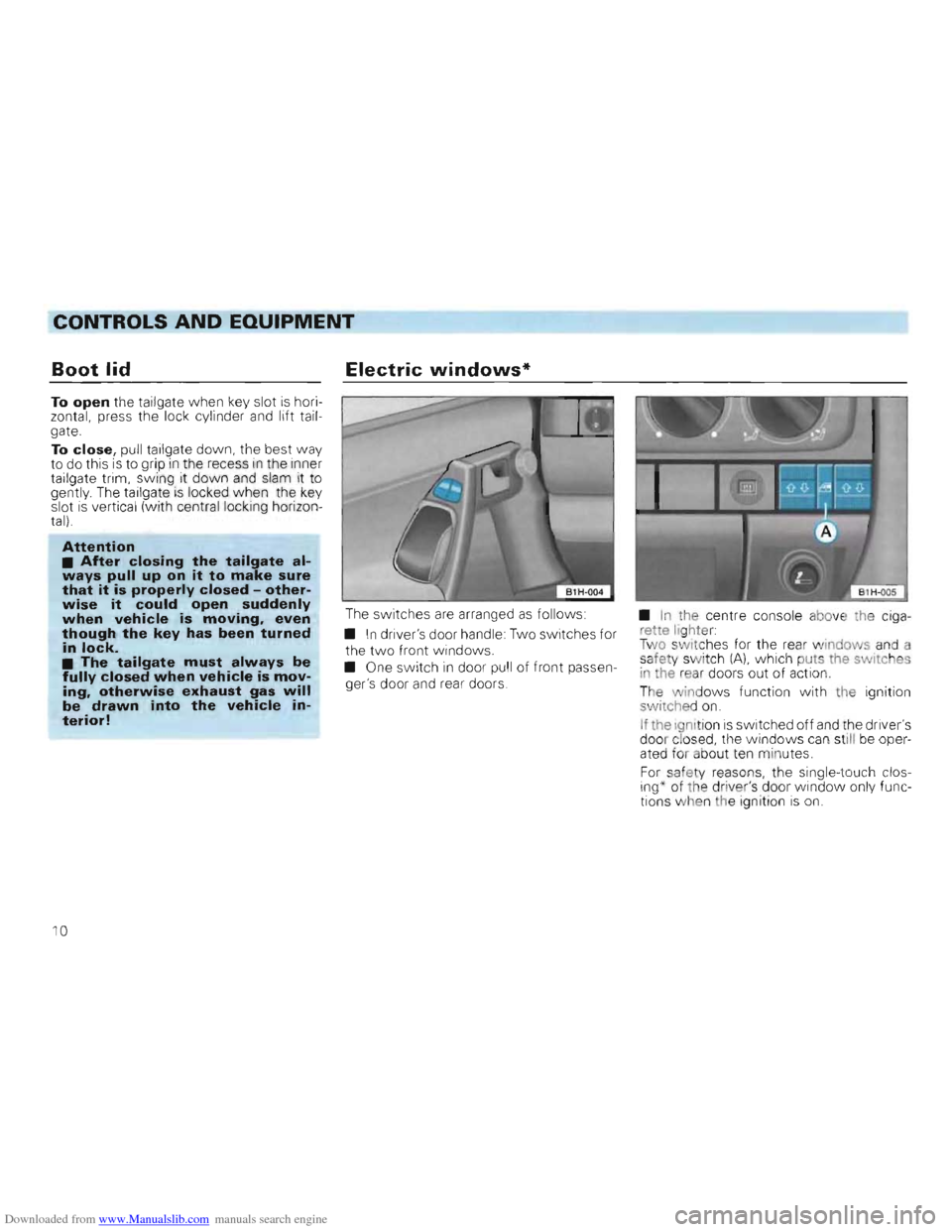
Downloaded from www.Manualslib.com manuals search engine CONTROLS AND EQUIPMENT
Boot lid
To open the tailgate when key slot is hori
zontal, press the lock cylinder and lift tail
gate.
To close, pull tailgate down, the best way
to do this is to grip in the recess in the inner
tailgate trim, swing it down and slam it to
gently . The tailgate is locked when the key
slot is vertical (with central locking horizontal)
Attention • After closing the tailgate always pull up on it to make sure that it is properly closed -otherwise it could open suddenly when vehicle is moving, even though the key has been turned in lock. • The tailgate must always be fully closed when vehicle is moving, otherwise exhaust gas will be drawn into the vehicle interior!
Electric windows*
The switches are arranged as follows:
•
In driver's door handle: Two switches for
the
two front windows.
• One switch
in door pull of front passen
ger's door and rear doors. •
In the
centre console above th e ciga
r ette lig h ter:
Tw o sw it c hes for the rear windows and a
safety switch (A), which pu ts the switc hes
I n the re ar doors out of act ion.
T he win
dows function with th e ignition
switche d on.
If the ign ition is switche d off and the driver's
doo r clos ed, th e wi ndows can st ill be oper
ated for ab out ten minutes.
For saf
ety reaso ns, the single- to uch clo sing~ of the dr iv e r's door window only functions whe n the ignition is on.
10
Page 13 of 156
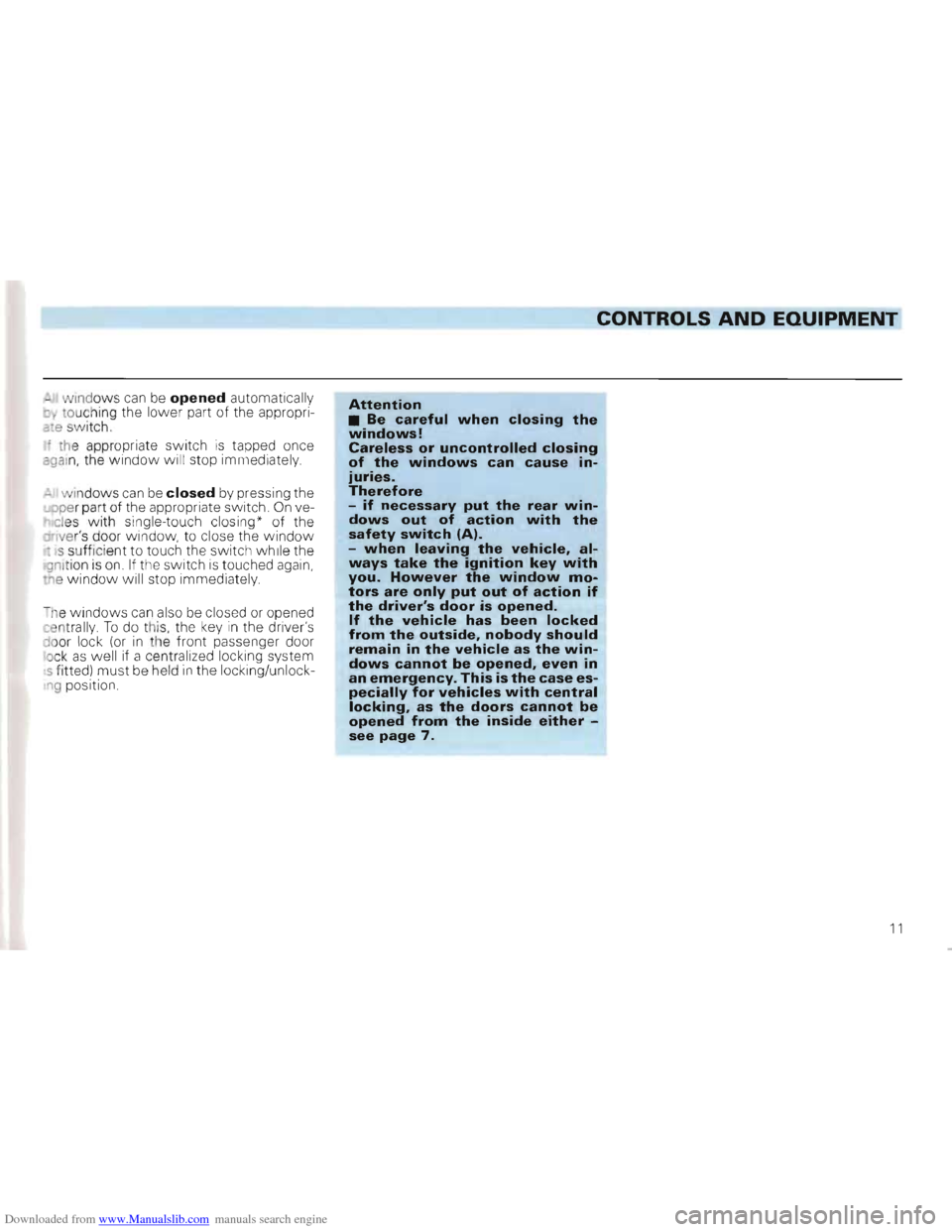
Downloaded from www.Manualslib.com manuals search engine CONTROLS AND EQUIPMENT
-I windows can be opened automatically o~ touch ing the lower part of the appropriate switch.
< the appropriate switch is tapped once aga in, the window will stop immediately
.... windows can be closed by pressing the
_op er part of the appropriate switch. On vecles with single-touch closing* of the
qv er's door window, to close the window -: IS s uffici ent to touch the switch while the
gnlt ion is on. If the switch is touched again,
e window will stop immediately
- h e
windows can also be closed or opened
cent rally To do th is, the key in the driver's
d o or loc k (or in th e front passenger door
l o ck as well if a centralized locking system
' s fitted) must be held in the locking/unlockng position
Attention • Be careful when closing the windows! Careless or uncontrolled closing of the windows can cause injuries. Therefore -if necessary put the rear windows out of action with the safety switch (A). -when leaving the vehicle, always take the ignition key with you. However the window motors are only put out of action if the driver's door is opened. If the vehicle has been locked from the outside, nobody should remain in the vehicle as the windows cannot be opened, even in an emergency. This is the case especially for vehicles with central locking, as the doors cannot be opened from the inside either see page 7.
11
Page 14 of 156
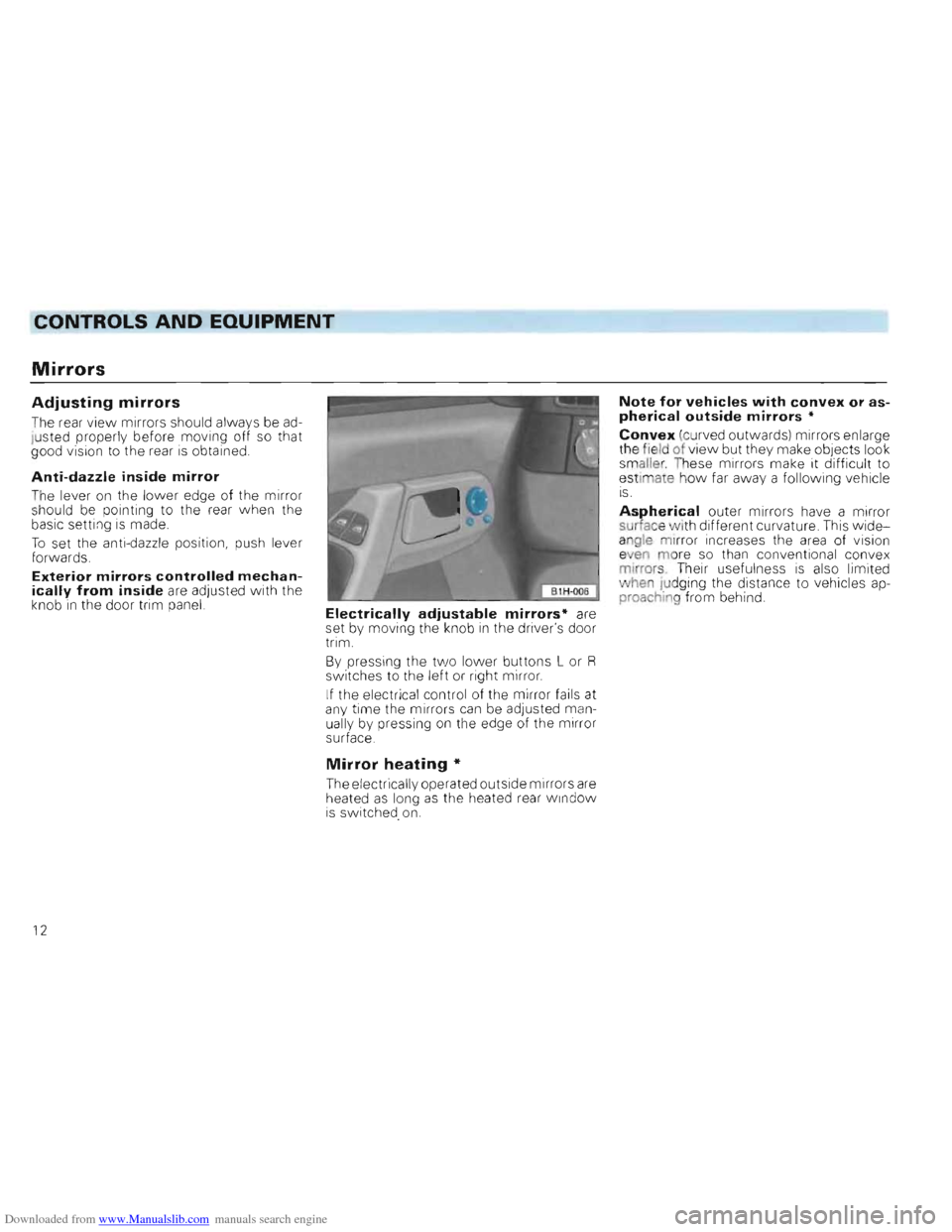
Downloaded from www.Manualslib.com manuals search engine CONTROLS AND EQUIPMENT
Mirrors
Adjusting mirrors
The rear view mirrors should always be ad
j u sted properly before moving off so that
good vision to the rear
is obtained.
Anti-dazzle inside mirror
The leve r on the lower edge of the mirror
s hou ld be pointing to the rear when the
basic setting is made.
To set the anti-dazzle position, push lever
forwards .
Exterior mirrors controlled mechanically from inside are adjusted wi th the
knob in the door trim panel. Electrically adjustable mirrors· are
set by moving the knob in the driver's door
trim .
B y pressing the
two lower buttons L or R switche s to the left or right mirror.
I f the electrical
contro l of the mirror fails at
any time the mirrors can be adjusted man
uall y by pressing on the edge of the mirror
surface.
Mirror heating *
The electrically operated outside mirrors are heated as long as the heated rear Wi ndow is switched. on.
Note for vehicles with convex or aspherical outside mirrors •
Convex (curved outwa rds) mirrors enlarge
th e field of view but they make objects look
sm aller. These mirrors make it difficult to
e stimate h
ow far away a following veh icle IS .
Aspherical outer mirrors have a mirror
surface vlfith different curvature. This wideangle mirror increases the area of vis ion e en more so than conventional convex
mirrors . The ir usef ulness is also li mi ted
" hen Judging the distan ce to vehicles ap
proaching from behind.
12
Page 15 of 156
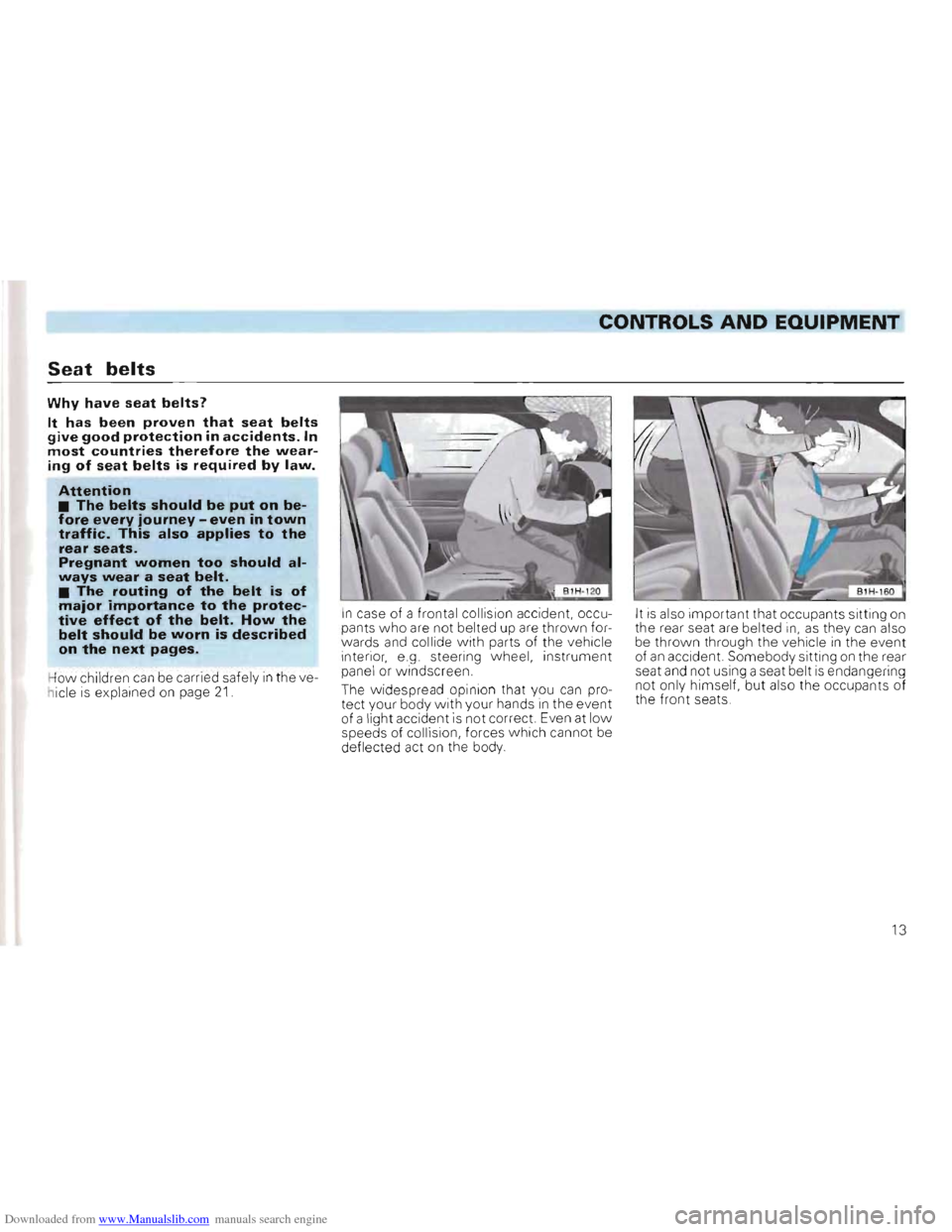
Downloaded from www.Manualslib.com manuals search engine CONTROLS AND EQUIPMENT
Seat belts
Why have seat belts?
It has been proven that seat belts give good protection in accidents. In most countries therefore the wearing of seat belts is required by law.
Attention • The belts should be put on be
fore every journey -even in town
traffic. This also applies to the
rear seats.
Pregnant women too should al
ways wear a seat belt.
• The routing of the belt is of
major importance to the protec
tive effect of the belt. How the
belt should be worn is described
on the next pages.
How children can be carried safely in the ve
h icle is explained on pag e 21 .
In case of a frontal collision accident, occu
pants w ho are not belted up are thrown for
w ards and collide with parts of the vehicle
interior, e.g steering wheel, instrument panel or w ind screen.
The wide spread opinion that you can pro
tect your body with your hands in the event
of a light accident is not corr ect. Even at low speeds of collision, forces which cannot be
deflected act on the body. It
is also
important that occupants sitting on
the rear se at are belted in, as they can also
be th rown throu gh the vehicle in the event
of an accident. Somebody sitting on the rear
seat and not u sing a seat belt is endangering
not only himself , but also the occupants of the front seats.
13
Page 16 of 156
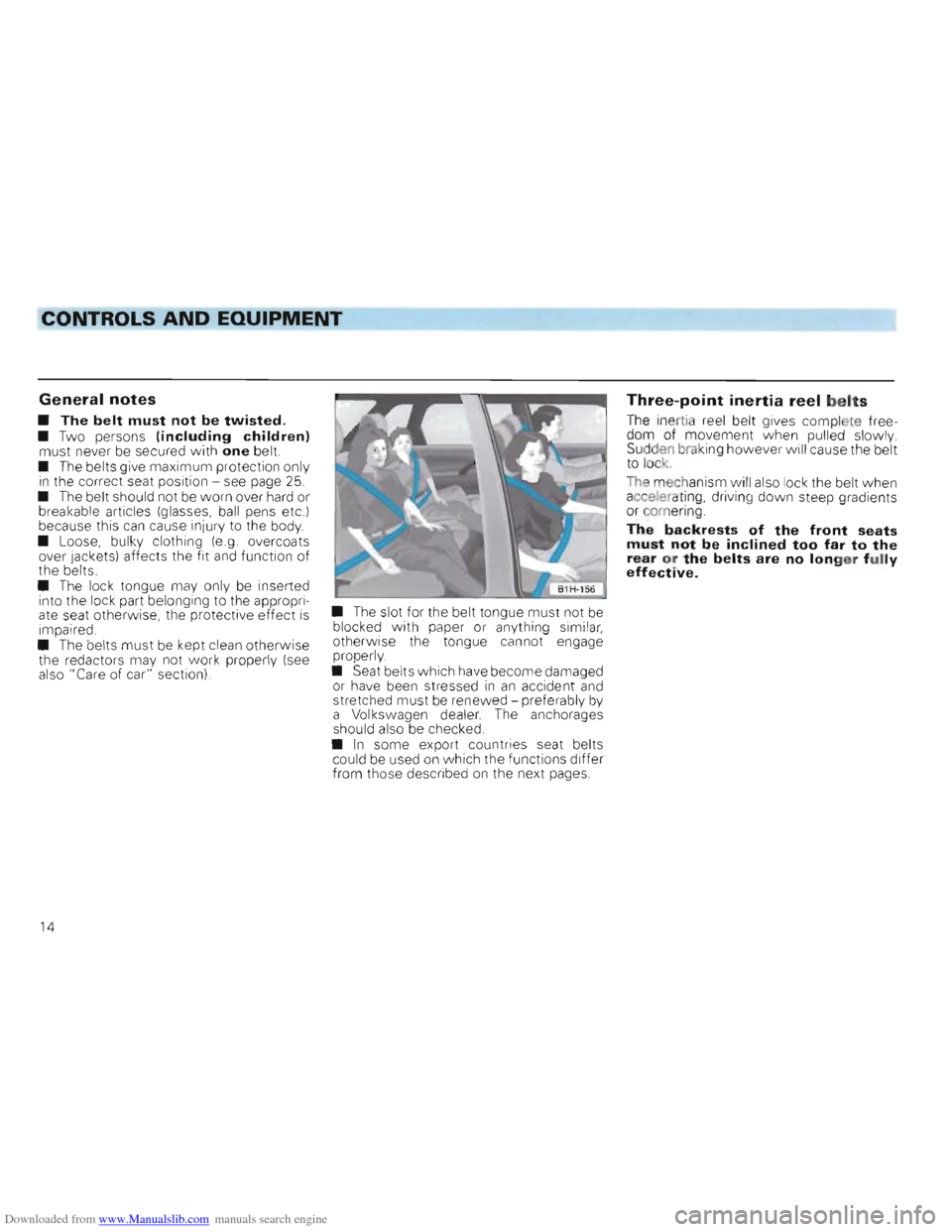
Downloaded from www.Manualslib.com manuals search engine CONTROLS AND EQUIPMENT
--------------------------------------------------------------------------------~
General notes
• The belt must not be twisted.
• Two persons (including children) must never be secured with one belt.
• The be lts give maximum prot ection only in the correct seat position -see page 25.
• The belt shou
ld not be worn over hard or
breakable articles (glasses, bal l pens etc.) because this can cause injury to the body .
• Loose, bulky clothing (e.g. overcoats
over Jackets) affects the
fit and funct ion of
the belts .
• The lock tongue may only be inserted
into the lock part belonging to the approp
riate seat otherwise, the protect ive effect is impaired.
• The belts
must be kep t clea n otherwise
the redactors may not work prope rly (see
a lso" Care of car" section) •
The
slot for the belt tongue must not be
blocked with paper or anything similar, otherwise the tongue cannot engage
proper ly.
• Seat belts which have become damaged
or have been stressed in an accident and
stretched must be renewed -preferab ly by
a
Vol kswagen dealer. The anchorages
should also be checked .
•
In some export countries seat belts
co uld be used on w hich the functio ns differ
from those described on the next pages.
Three-point inertia reel belts
The ine rtia ree l belt gives complete free
do m o f mov ement when pul[ed slowly.
Sud den brak ing
however will cause the belt
to loc k.
Th e mec hanism w
il[ a lso lock the belt w hen acc eler ati ng, driving down steep gradients
o r cornering.
The backrests of the front seats must not be inclined too far to th e rear or the belts are no longer fully effective.
14
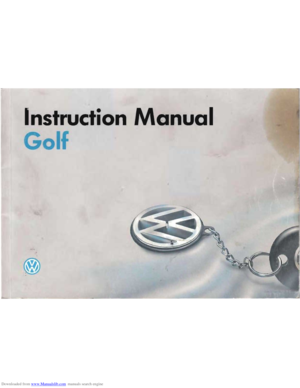 1
1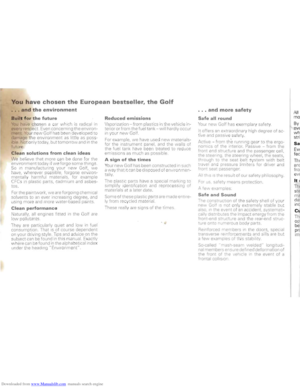 2
2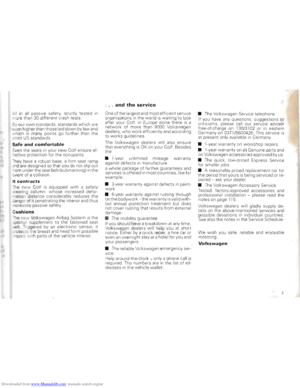 3
3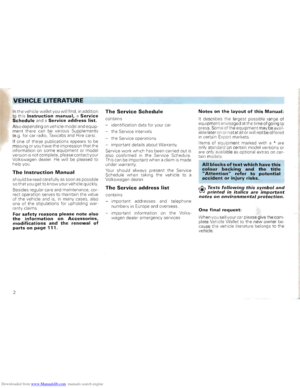 4
4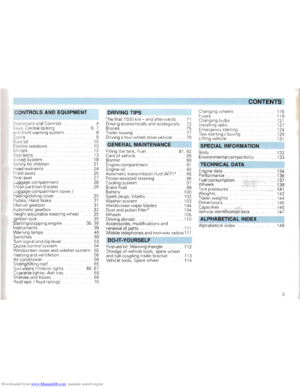 5
5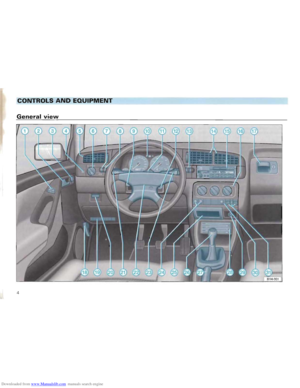 6
6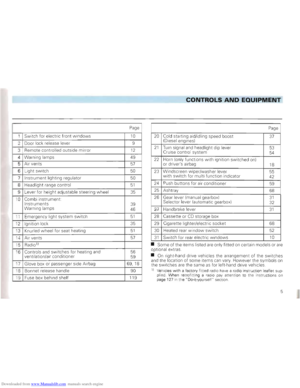 7
7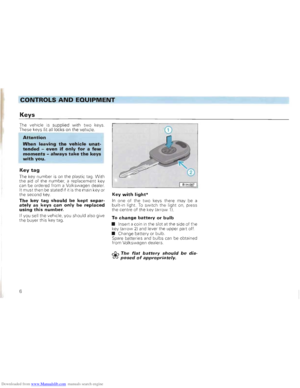 8
8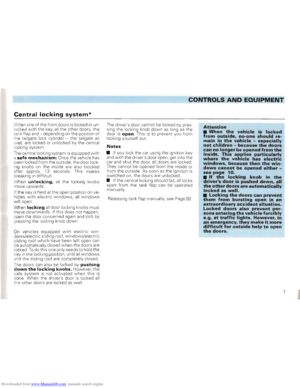 9
9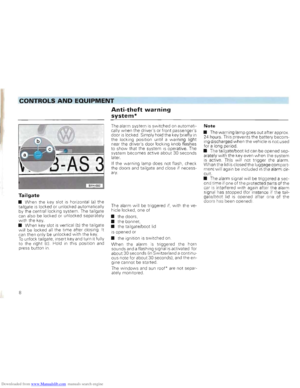 10
10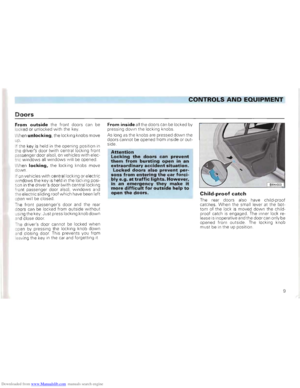 11
11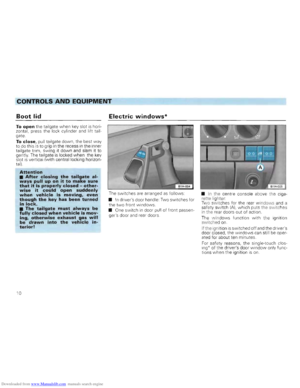 12
12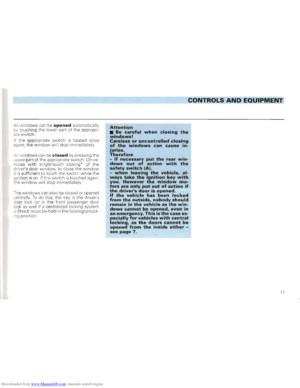 13
13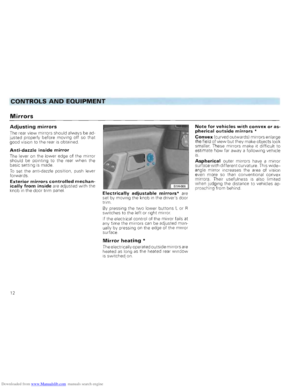 14
14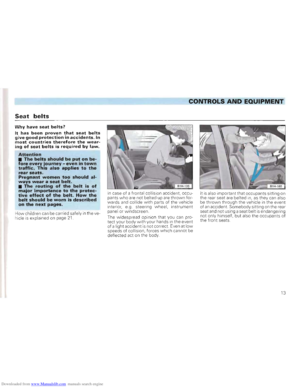 15
15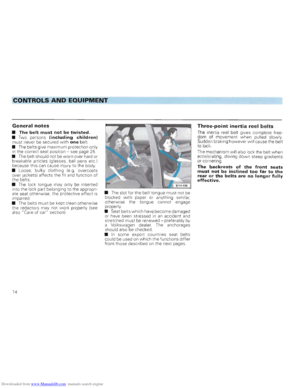 16
16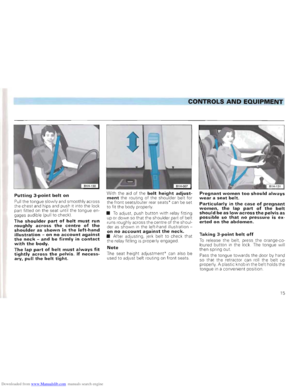 17
17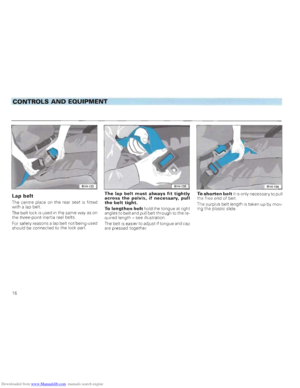 18
18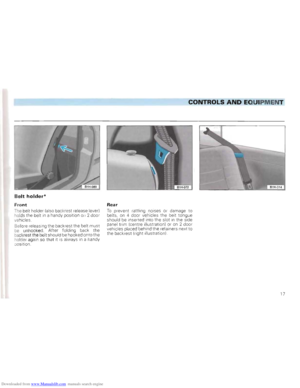 19
19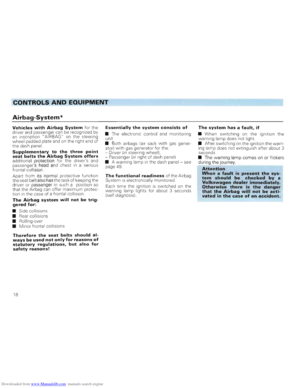 20
20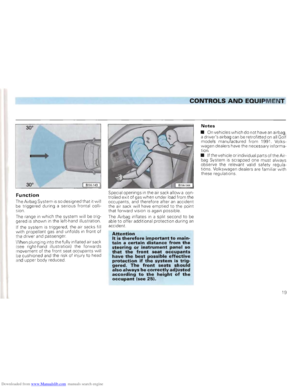 21
21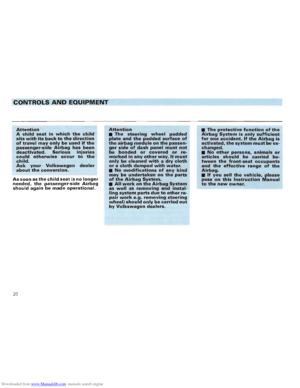 22
22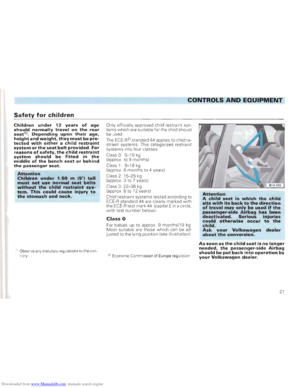 23
23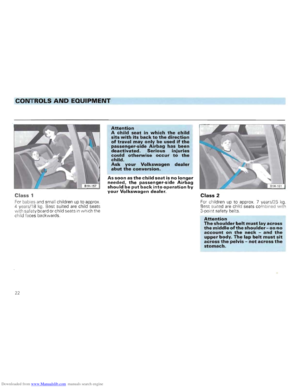 24
24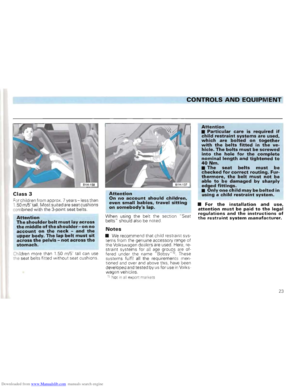 25
25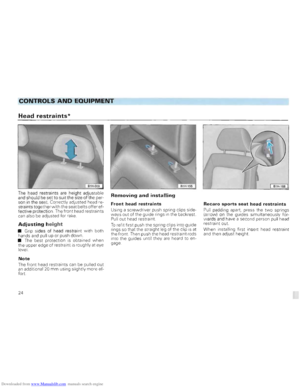 26
26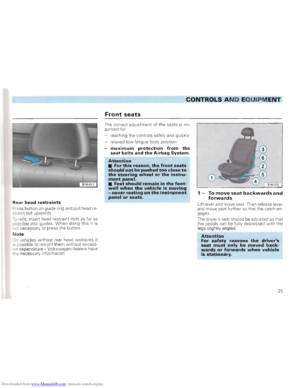 27
27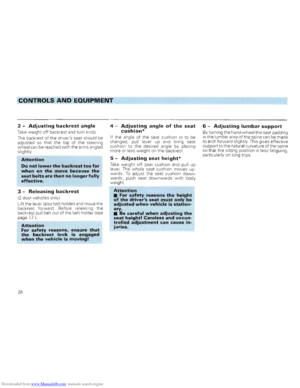 28
28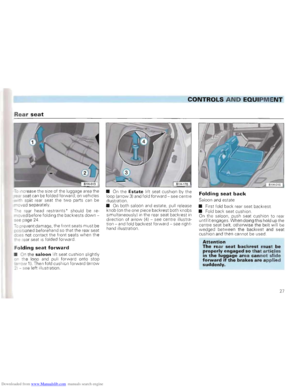 29
29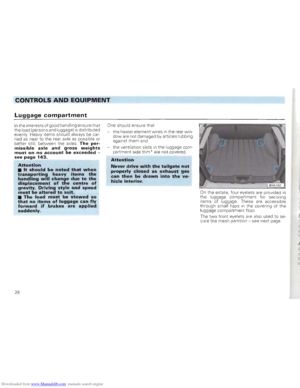 30
30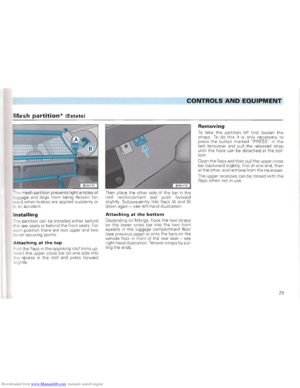 31
31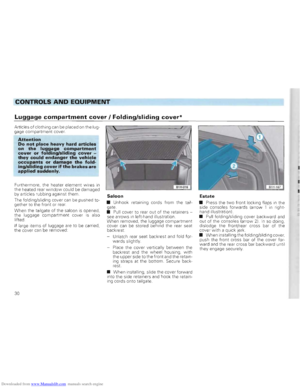 32
32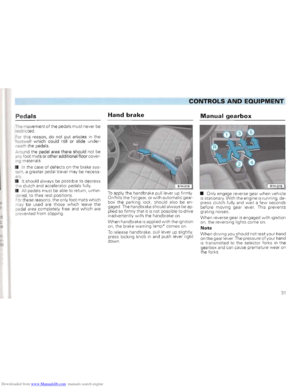 33
33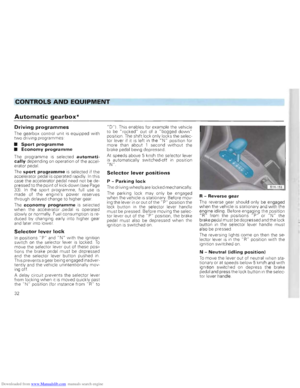 34
34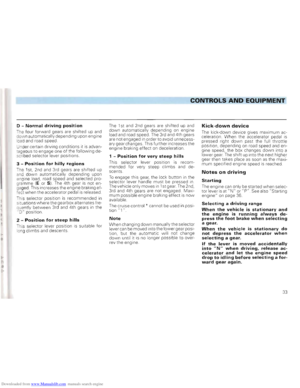 35
35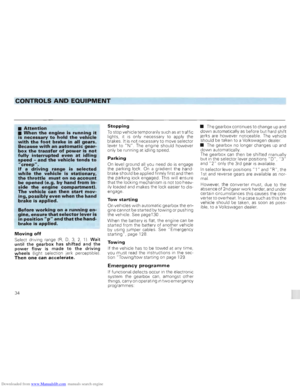 36
36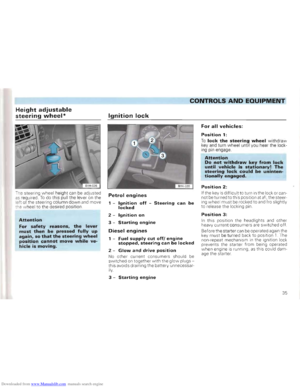 37
37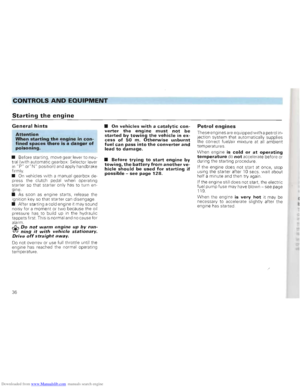 38
38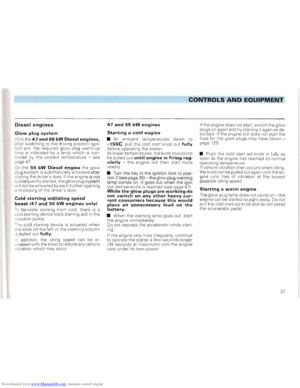 39
39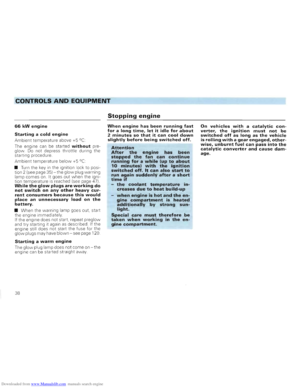 40
40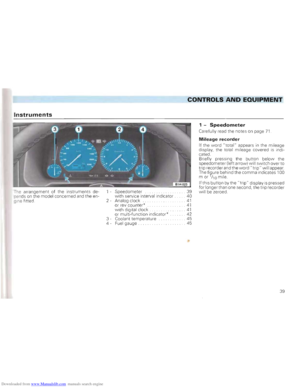 41
41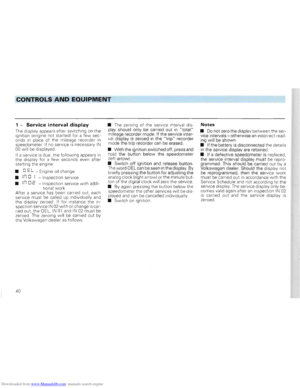 42
42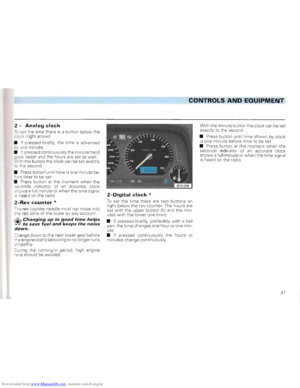 43
43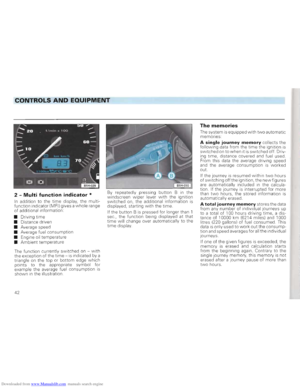 44
44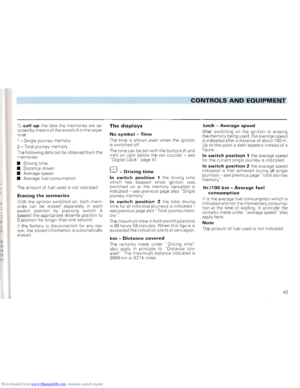 45
45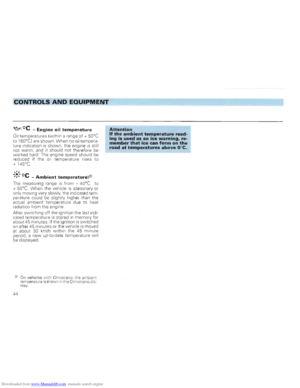 46
46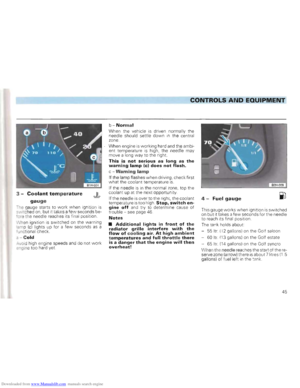 47
47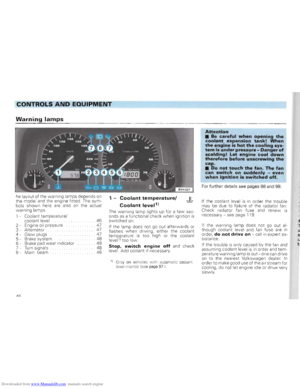 48
48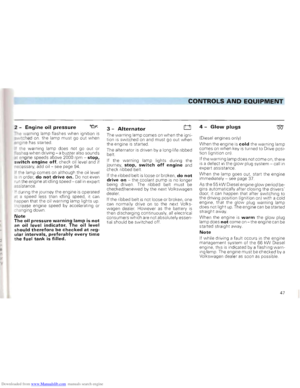 49
49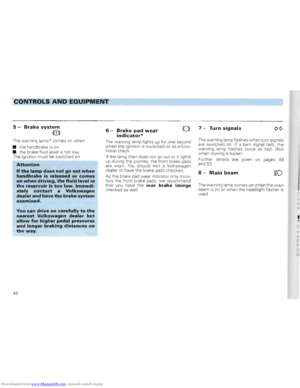 50
50 51
51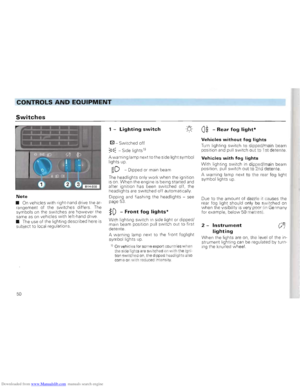 52
52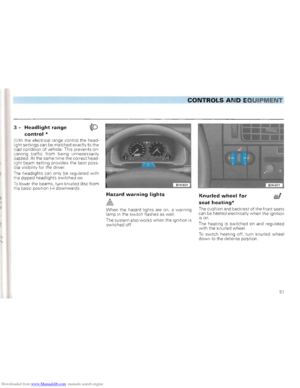 53
53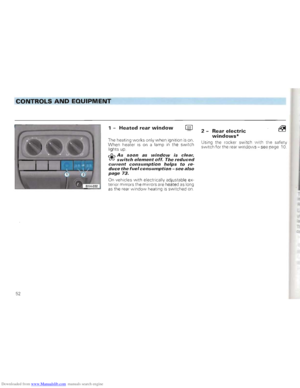 54
54 55
55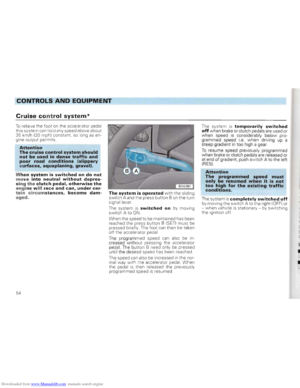 56
56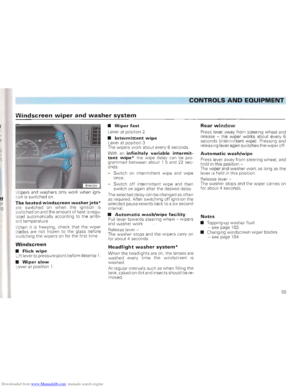 57
57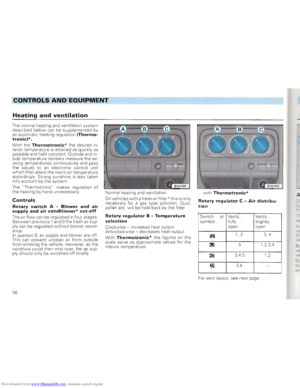 58
58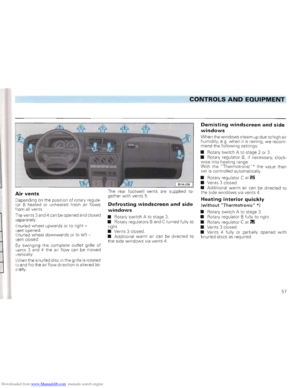 59
59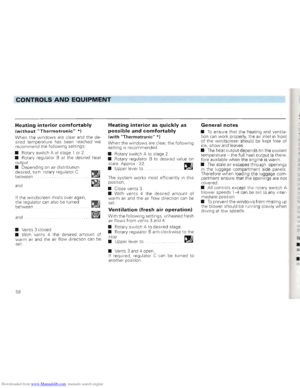 60
60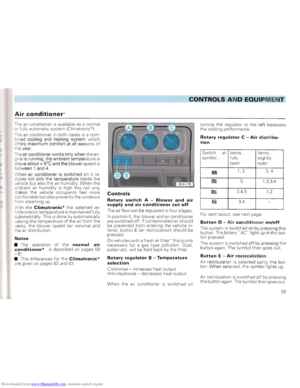 61
61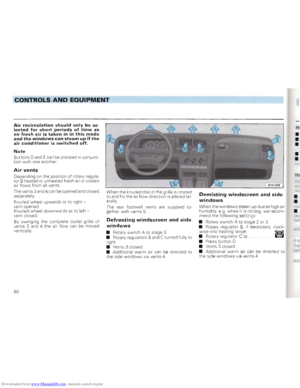 62
62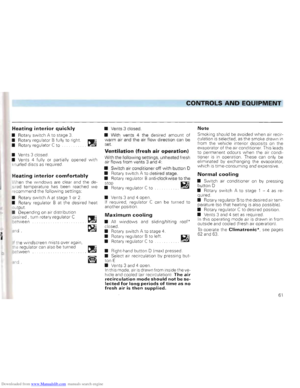 63
63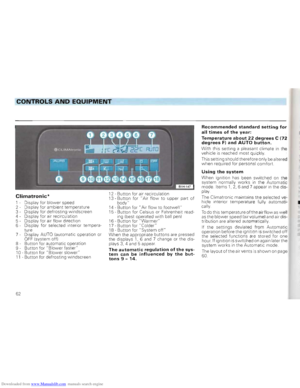 64
64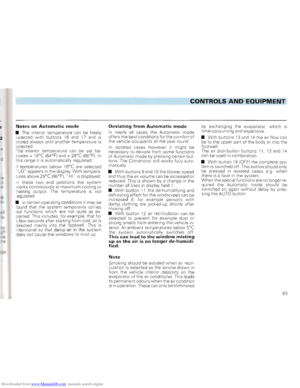 65
65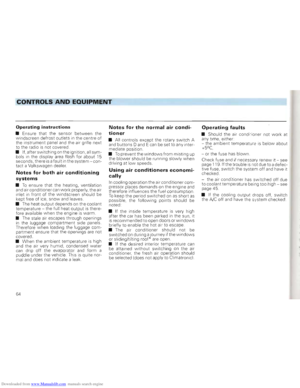 66
66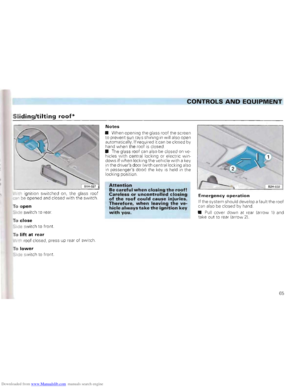 67
67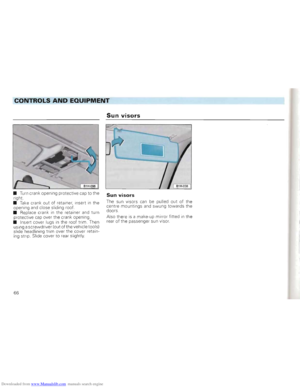 68
68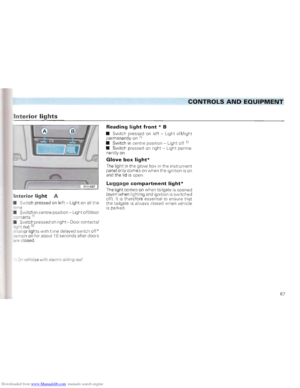 69
69 70
70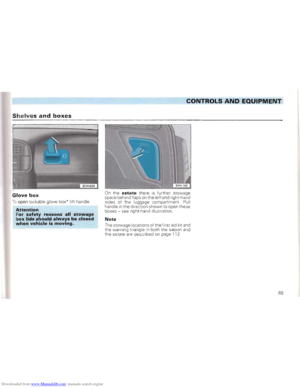 71
71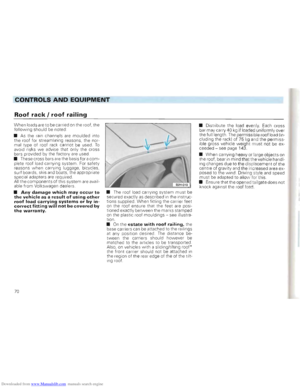 72
72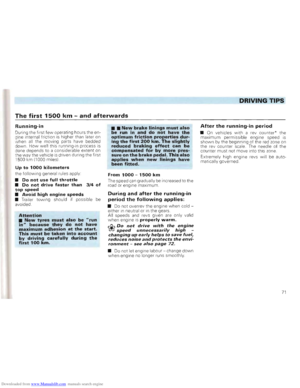 73
73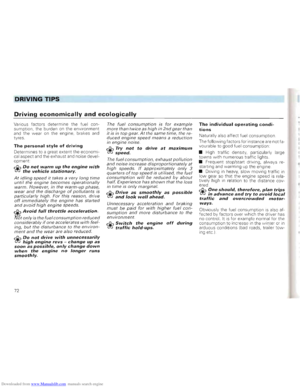 74
74 75
75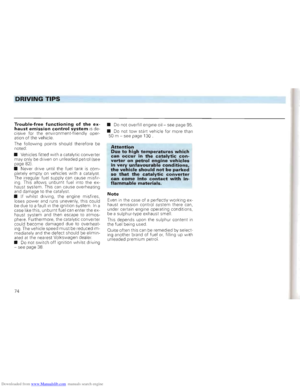 76
76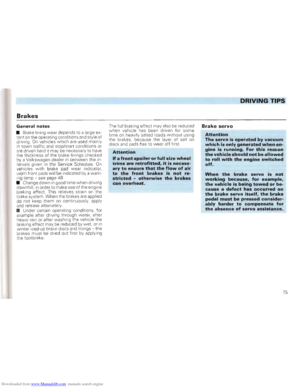 77
77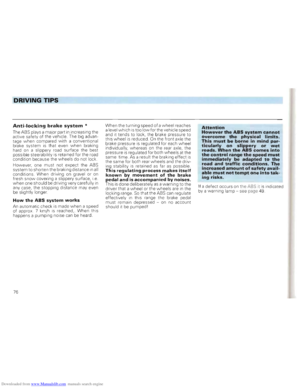 78
78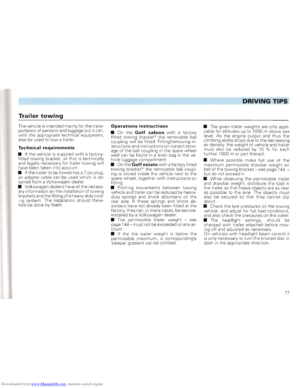 79
79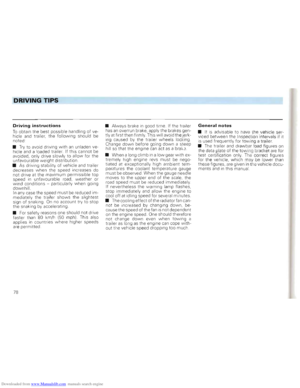 80
80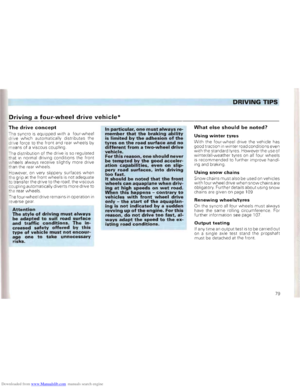 81
81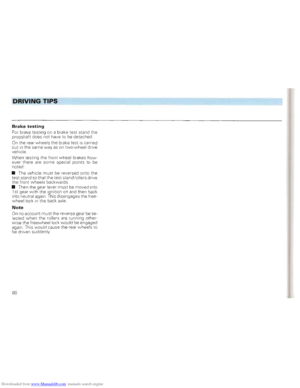 82
82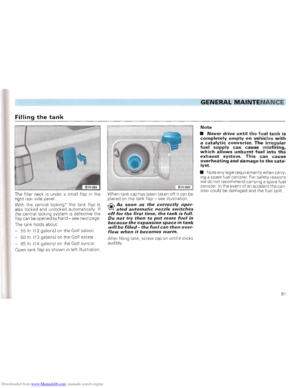 83
83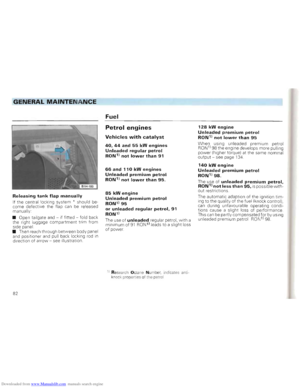 84
84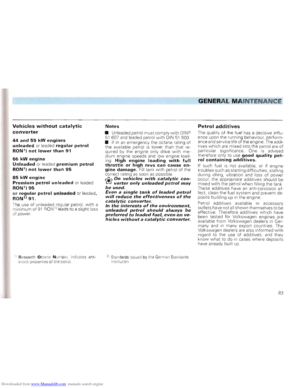 85
85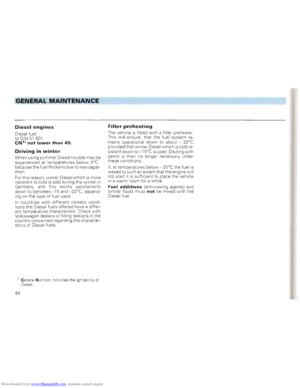 86
86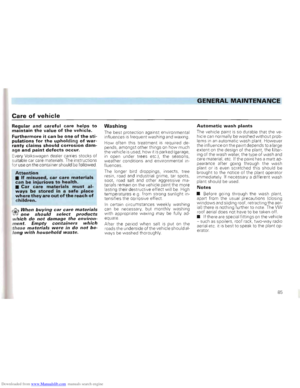 87
87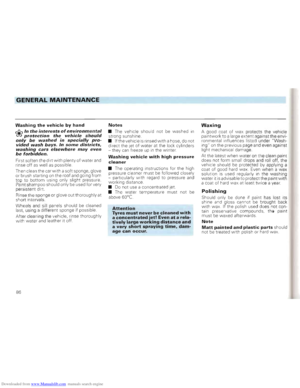 88
88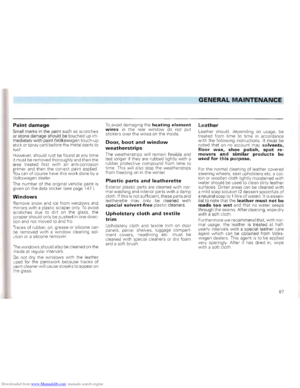 89
89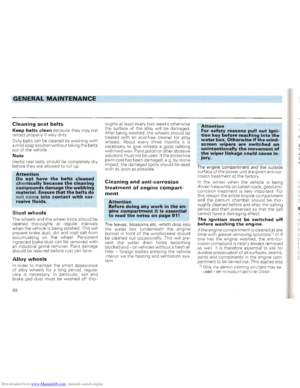 90
90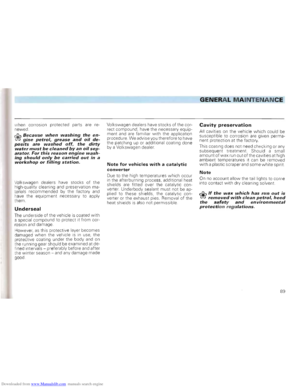 91
91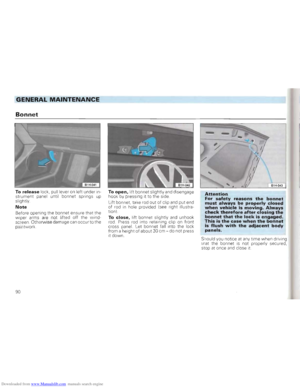 92
92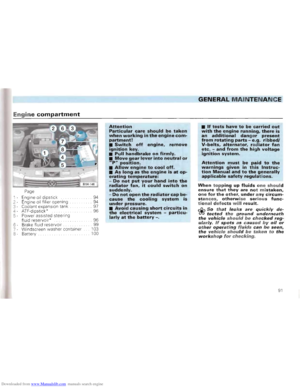 93
93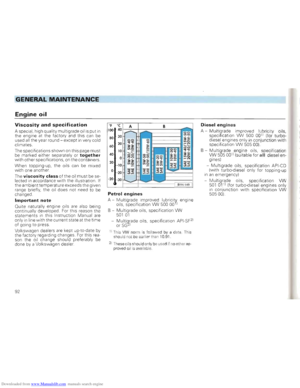 94
94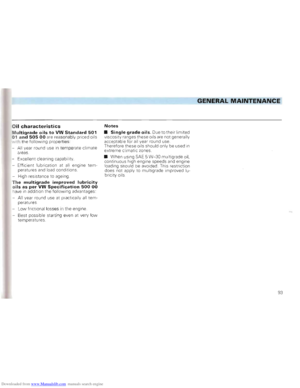 95
95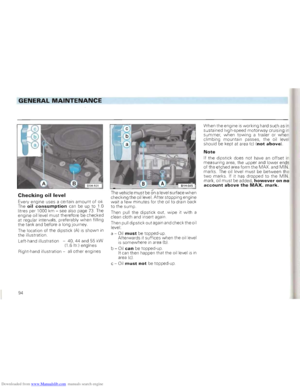 96
96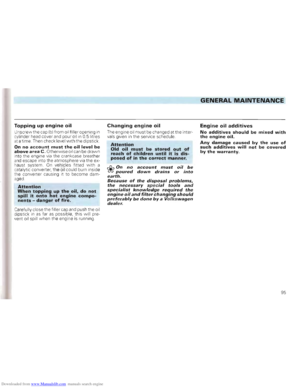 97
97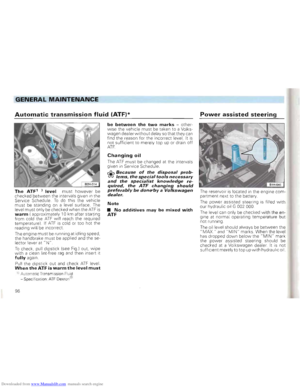 98
98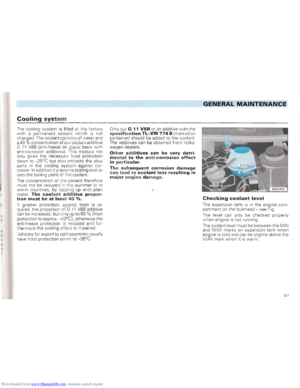 99
99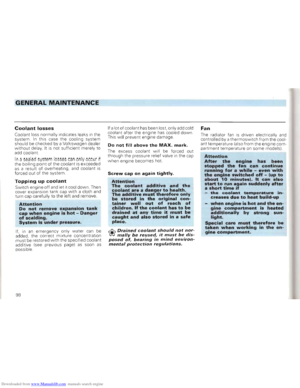 100
100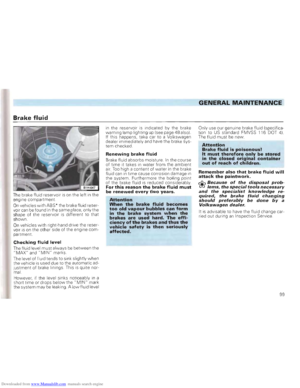 101
101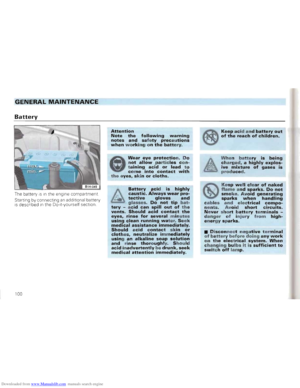 102
102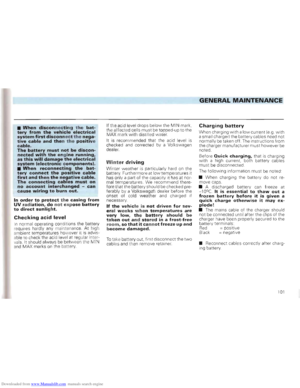 103
103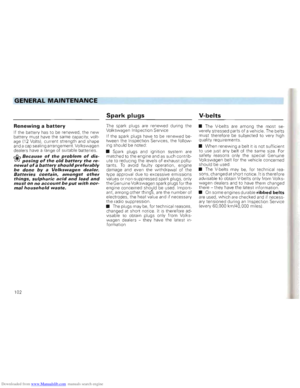 104
104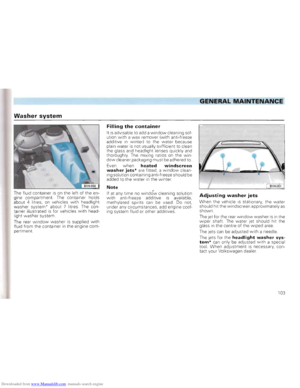 105
105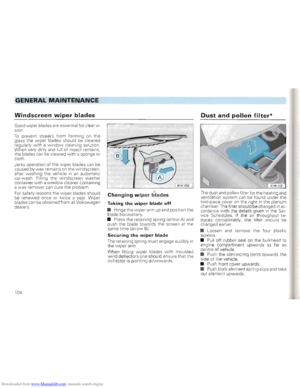 106
106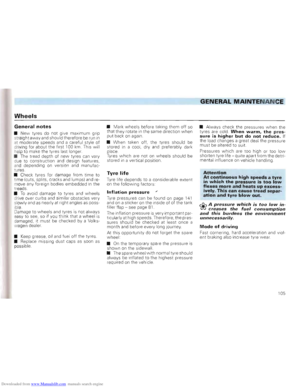 107
107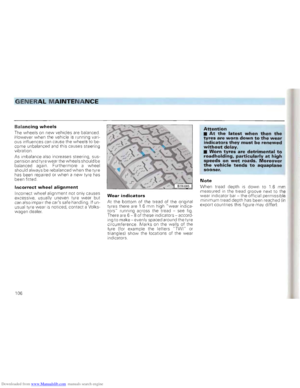 108
108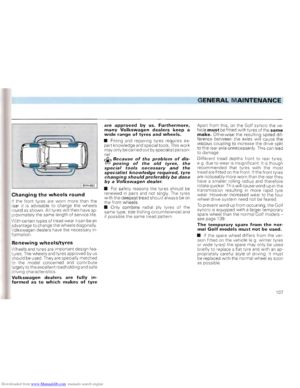 109
109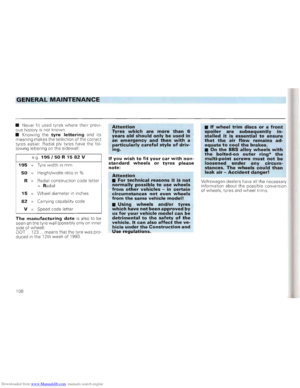 110
110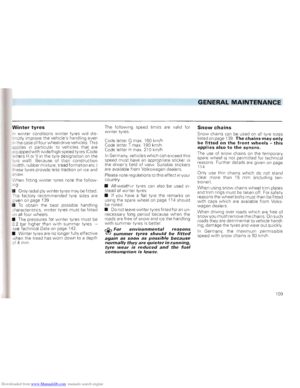 111
111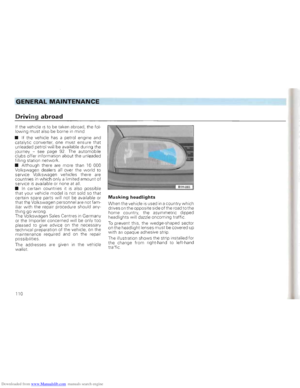 112
112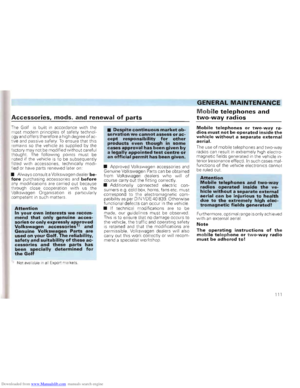 113
113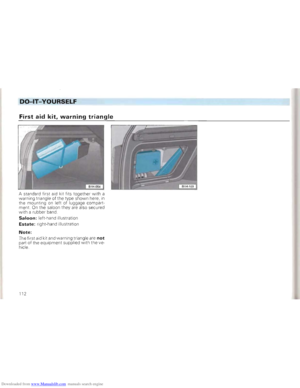 114
114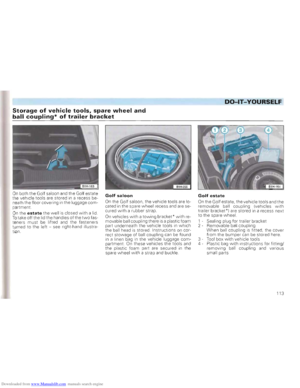 115
115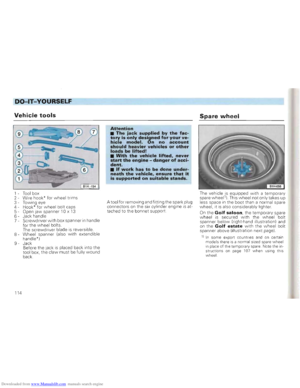 116
116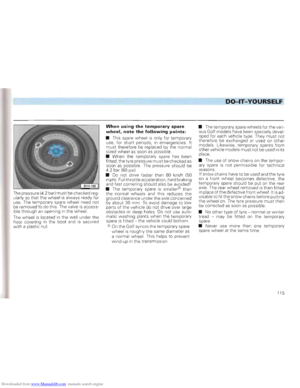 117
117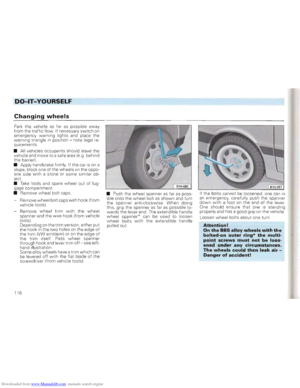 118
118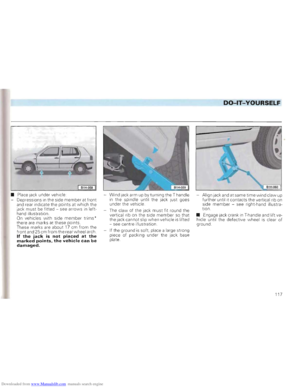 119
119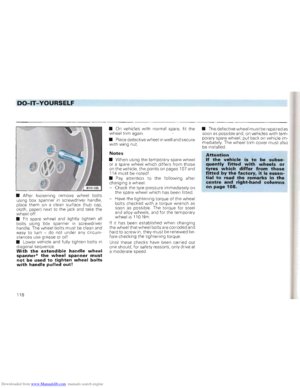 120
120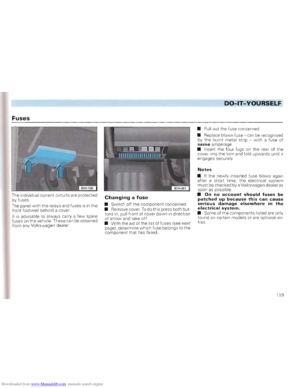 121
121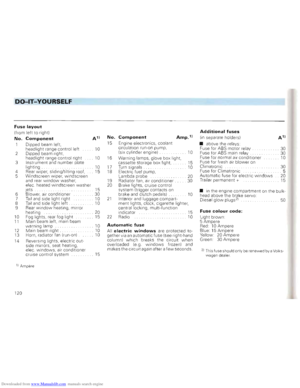 122
122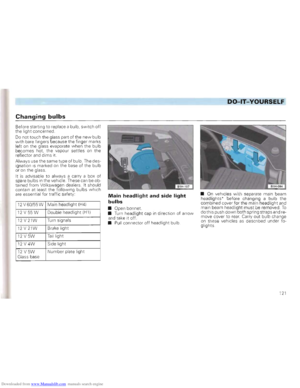 123
123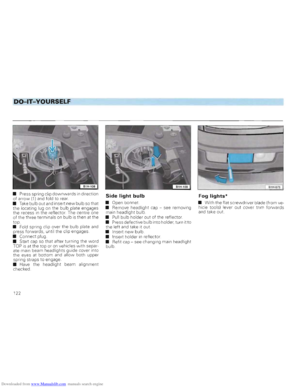 124
124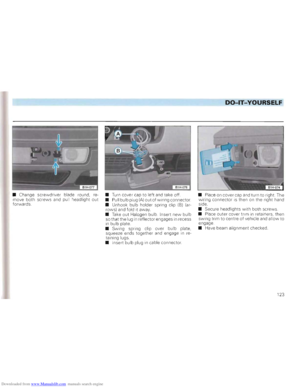 125
125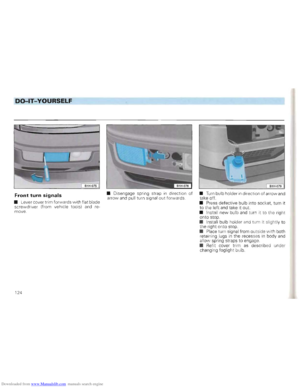 126
126 127
127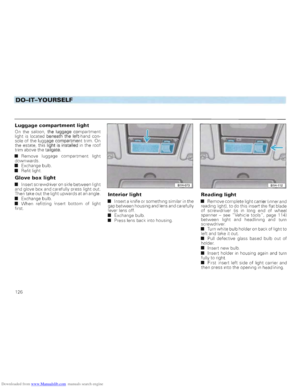 128
128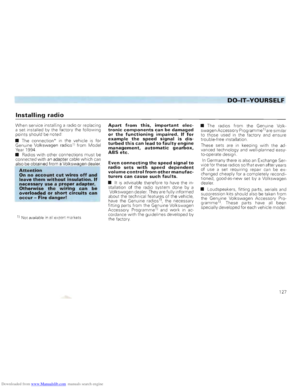 129
129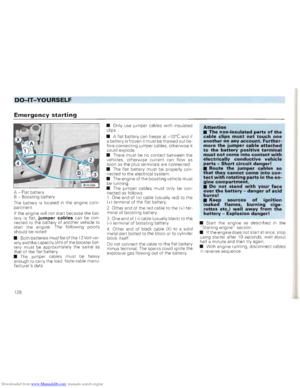 130
130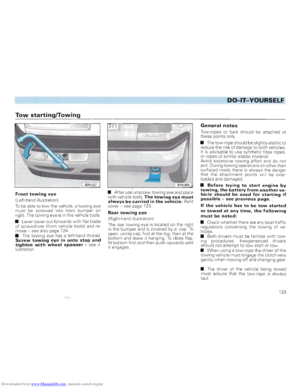 131
131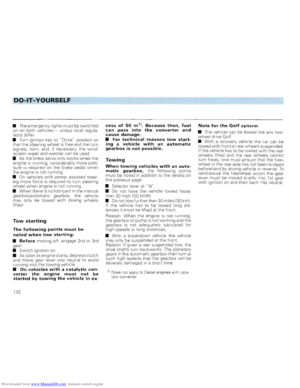 132
132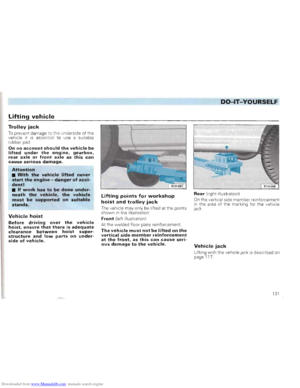 133
133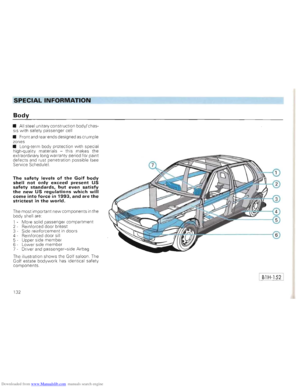 134
134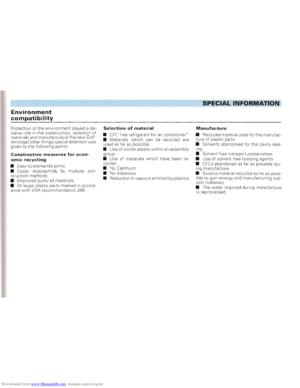 135
135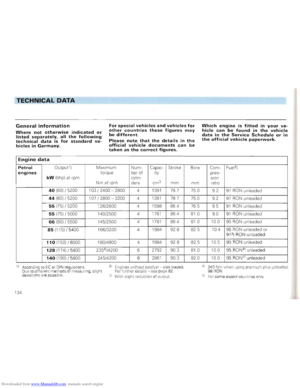 136
136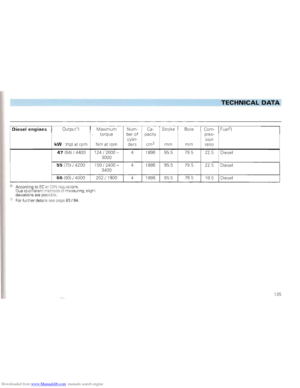 137
137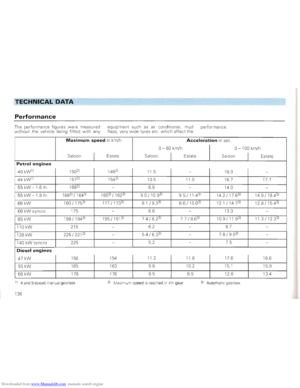 138
138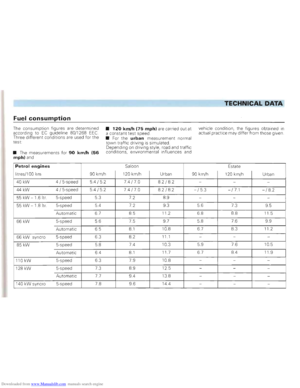 139
139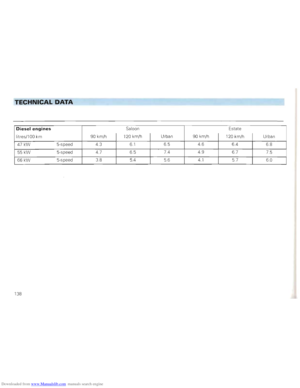 140
140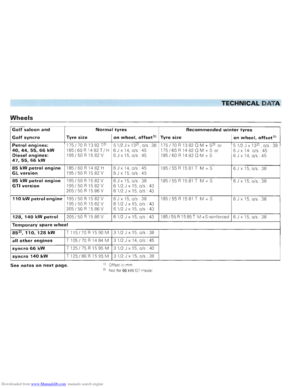 141
141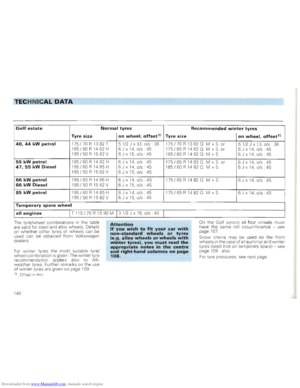 142
142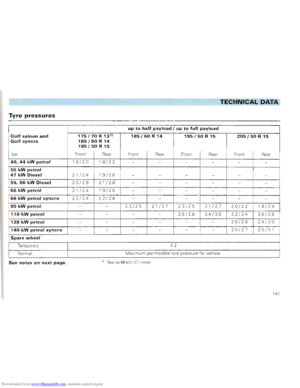 143
143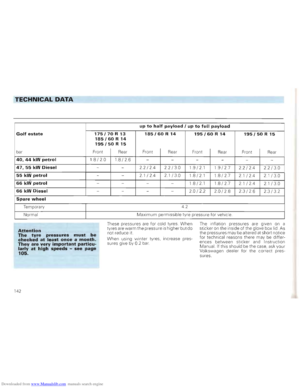 144
144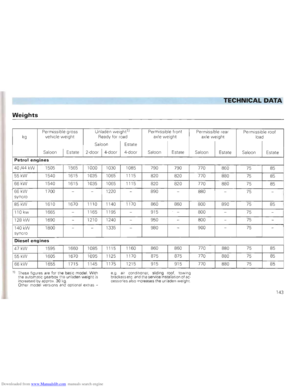 145
145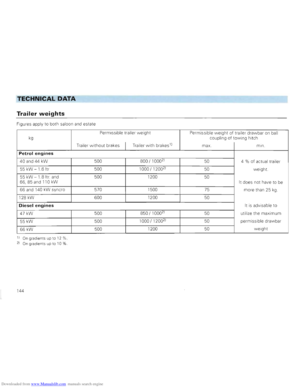 146
146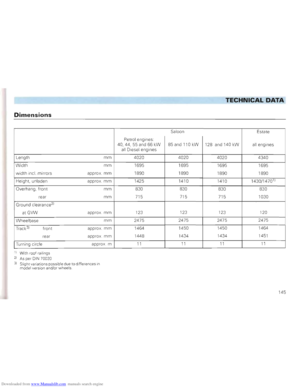 147
147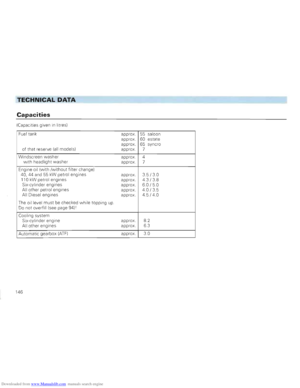 148
148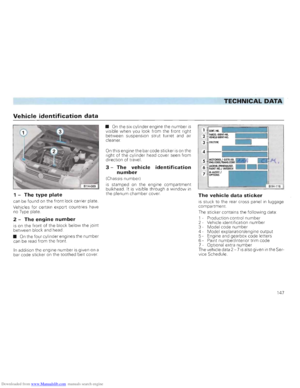 149
149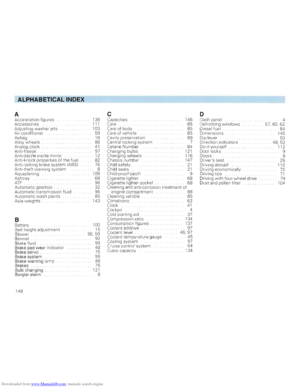 150
150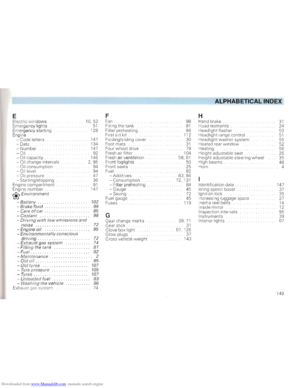 151
151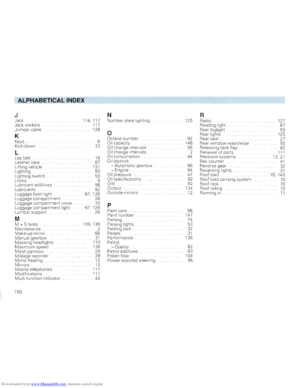 152
152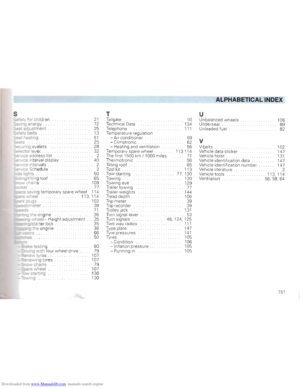 153
153 154
154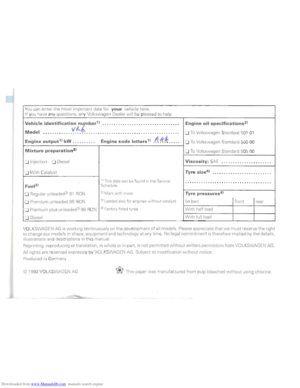 155
155






